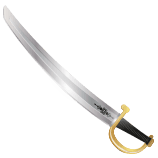
The enjoyment and bondage of our karmas arrive in the form of Dasha in this birth, the fifth house showing the accumulated karma, and the ninth house, commonly known as fate. Determines our destiny. And it is chosen what our experience will be in this birth based on the birth constellation.
Sanskrit Name: उत्तर फाल्गुनी ( #Uttara-phalguni) comes from the Sanskrit words उत्तर (latter) and फल्गु (spring season).As “the latter reddish one,” #UttaraPhalguni might stand for the sweltering late-spring heat, boundless vitality, and a depth of understanding beyond their years.
The Uttara Phalguni #Nakshatra, signified by the word ‘ #bed,’ has as one of its general characteristics the desire to pursue truth via knowledge and action. One of its most prominent characteristics is marital prosperity. Among the general qualities of the Uttara Phalguni Nakshatra are the achievement of truth and liberation from the bonds of worldly existence.
The #sun is the lord of Uttara Phalguni Nakshatra in #Vedicastrology. It appears that the back leg of the bed or cot represents a comfortable and luxurious life. Uttara Nakshatra’s Hindu deity is #Bhaga.
People born under the influence of Uttara Phalguni Nakshatra have kindness, charity, and protection as personality attributes. They are charming and appealing, and they are respectful, obedient, and knowledgeable. In their personality attributes, they reflect royal qualities like compassion, generosity, and honesty. Their pleasant temperament and righteousness are very attractive, in addition to the main characteristics of helpfulness, friendliness, and generosity. Honesty and truthfulness are also appealing qualities.
It is important to note that, being in the same pair, both Uttara Phalguni Nakshatra and Purva Phalguni Nakshatra have some common features. Despite the similarities, positive traits predominate in Uttar Phalguni Nakshatra.
Favourable traits: Marriage, Sexual Activity, Beginning Activities, Founding an Organisation, Dealing with Authority Figures, Administrative Work, Buying a Home, Inaugurations, Performing Ceremonies, Giving to Charity, Diplomacy, and Wearing New Garments or Jewellery
Unfavourable: Endings, Completions, Confrontations, Retaliation, Activities requiring Harsh Behaviour, Retribution, Combat, and Lending Money
Uttara-Phalguna Careers
Teacher or professor, Business advisor, financial advisor, or diplomat, Philanthropist, social worker, or counselor, Writer, actor, or media personality, member of the clergy or other religious leader
Weaknesses
In the successful, admired life of the Phalgunis, it is difficult to avoid the pitfalls of vanity. Their belief in your own purity can make them think that you are better than others. This can make them inconsistent or aloof with people when they are not trying to get anything out of them.
They can become restless and if they lose interest in something, they may have difficulty sticking to it. When their intelligence is not stimulated, they get bored. This could lead them to premature desert projects.
Uttara Phalguni Nakshatra Lord: Sun. In astrology, the sun is considered the king of the planets. This planet is associated with the soul or self, leadership, happiness, success, self-realization, and spiritual enlightenment.
Uttara Phalguni Nakshatra: Body Parashara: Heart
Uttara Phalguni Nakshatra Symbol: Bed, legs of a cot
(The back legs of a bed, particularly the marriage bed, are symbolic. The hammock represents a state of deep meditation and the pleasure associated with the stillness of life and thoughts. The four legs of a couch symbolize the four planes of the soul’s evolution: physical, mental (conscious), astral (subconscious), and ethereal (supra-conscious).
Uttaraphalguni Nakshatra Deity: Bhaga-the Sun as bliss
Shakti (power to/of…): Giving of prosperity through union or marriage
Uttara Phalguni Nakshatra Caste: Kshatriya
Uttara Phalguni Nakshatra Nature: fixed or permanent (Dhruva)
Manushya Gana: (The Nakshatras are classified as either “monsters,” “humans,” or “gods.” The nakshatra of Uttara-phalguni has a human quality. Members in this group tend to be ambitious and dedicated to their careers. Although typically good, they have a dark side and can be vengeful and self-interested.)
Uttara Phalguni Nakshatra Rashi / Zodiac: Leo/Virgo sign
Leo (first quarter) and Virgo (second through fourth quarters). Leos are strong, courageous, and generous-spirited individuals who may struggle with vanity. Virgos are intelligent, competent, and practical problem-solvers who enjoy using their skills to assist others. (They have the potential to be critical.)
Uttara Phalguni Nakshatra Marriage: Auspicious
Ruling Deity of the Sun: Shiva
Uttara Phalguni Nakshatra Number: 12
Uttara Phalguni Nakshatra Gender: Female
Uttaraphalguni Nakshatra Names Letter: Tay, To, Pa, Pee
Uttara Phalguna Nakshatra Lucky Stone: Ruby
Uttara Phalguni Nakshatra Lucky Color: Bright blue
Uttara Phalguni Nakshatra Lucky or Favorable Numbers: 1
Uttara Phalguni Nakshatra Element: #Fire
Uttara Phalguni Nakshatra Guna: #Rajasic
Uttara Phalguni Nakshatra Dosha: #Vata
Uttara Phalguni Nakshatra Bird: #Beetle
Uttara Phalguni Nakshatra Yoni/Animal Name: Vrishabha (#Bull)
Uttaraphalguni Nakshatra Tree: #Badari #Tree (Ber, Jujube)
They like to live a life of luxury and comfort
https://astrokavi.com/2021/12/20/uttara-phalguni-luxury-and-comfort/























